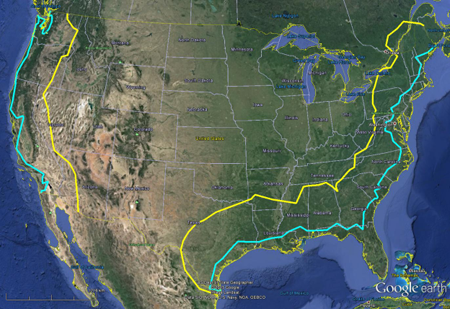NTIA Releases Report Furthering President's Commitment to Identifying Spectrum for Commercial Wireless Broadband
Today, the National Telecommunications and Information Administration (NTIA) released an important technical report developed by engineers in NTIA’s Office of Spectrum Management (OSM) and Institute for Telecommunication Sciences (ITS) that provides the technical analysis supporting spectrum sharing in the 3550-3650 MHz band. It serves as a concrete example of our efforts to make more spectrum available to meet the exploding demand for commercial wireless broadband while protecting mission-critical Federal systems.
The Federal Communications Commission (FCC) in April approved an innovative regulatory framework that would enable commercial access to 150 megahertz of spectrum in the 3.5 GHz band. This framework grew out of NTIA’s 2010 Fast Track Report, which identified the 3.5 GHz band as a possible candidate for spectrum sharing to fulfill the President’s goal of identifying 500 megahertz of additional spectrum for commercial wireless broadband by 2020. Federal agencies are currently using this spectrum to operate military shipborne, ground-based, and airborne radar systems.
The Fast Track Report had proposed allowing commercial wireless broadband providers to have access to this spectrum where such use would not interfere with these critical high-powered radar systems operated by the Department of Defense (DoD). However, NTIA recognized that if exclusion zones -- the areas of the country where commercial use was prohibited – were too large, it would significantly limit the viability of deploying new commercial broadband services in the band. To address this, NTIA engineers spearheaded groundbreaking analysis and modeling techniques and collaborated closely with DoD and FCC staff to minimize the size of these exclusion zones to the greatest extent possible without impairing the incumbent radar systems. This team effort resulted in significantly reduced exclusion zones – a 77% reduction in coastal geographic areas from the previous proposal – maximizing the commercial market potential for new broadband services. These results, along with the pioneering regulatory framework that relies on technical solutions to minimize the impact of these zones, are the foundation of the FCC’s new rules.
NTIA Technical Report TR-15-517: 3.5 GHz Exclusion Zone Analyses and Methodology presents the assumptions, methods, analyses, and system characteristics used to generate the maps of the revised exclusion zones that NTIA submitted to the FCC in March. The report provides a description of the technical and deployment parameters of Citizens Broadband Radio Service Device access points and user equipment, technical characteristics of federal radar systems, and the analysis methodology used to compute the distances that established the revised exclusion zones. In particular, the report provides detailed descriptions of the propagation and clutter loss models used to predict transmission loss in a variety of scenarios and the computational methods used to predict aggregate interference power.
In the image below, blue lines show revised composite shipborne radar exclusion zones in the lower 48 states, reduced from the Fast Track exclusion zones shown by the yellow lines.
NTIA has long recognized that the 3.5 GHz band holds significant potential for exploring the next- generation of spectrum sharing technologies and methodologies, and can be a real-world test bed for driving greater productivity and efficiency in spectrum use. The work documented in this report was essential to opening up this opportunity. It is now up to all stakeholders to collaborate and innovate in maximizing the use of this valuable piece of spectrum real estate.

